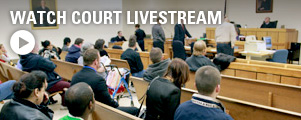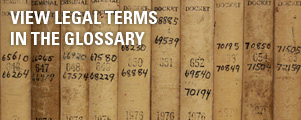Whose job is it to turn off the camera?
Tuesday was a big day. We threw in the towel on designing the site completely by ourselves and met with BU’s Creative Services to get possible design help. They got the project immediately and had a lot of good suggestions for WordPress specific web hosting and other such things that would help. Joe and I made a huge amount of progress in defining how many pages and templates we’re hoping they can design, and what they look like in wireframe. Now just to squeeze the money our of our budget.
Then in the afternoon, we went to see Chris Bavitz and David Ardia of the Berkman Center for Internet and Society at Harvard. They were really helpful and we gleaned tons of advice from them about our legal questions and about good resources to help us. David will be more of a general advisor, while Chris will offer more focused legal advice. As a member of our Advisory Board, David (I anticipate) will hold the 1st Amendment line pretty strongly and challenge us when we are giving away too many of our rights to concerns about privacy.
We’re getting closer to making the live video stream a reality. We forged ahead with our camera-buying plans – we zeroed in on the Canon XH-A1s, which seems to have all of the features that we want, within our price range. And we met with Craig Burlingame, the Chief Information Officer of the courts to try and figure out how to bring a dedicated internet line to the court. Joe also made inquiries with Verizon, Comcast and that whole cast of characters.
One huge issue that’s arisen from our conversations this week is the issue of who is going to turn off the cameras when the judge wants it off. We had assumed it would be the producer who’s sitting by the camera (me, most of the time), but when talking to Craig and David Ardia, it became clear that for the sake of the iterability (John Davidow’s favorite word) of the project, it should really be an interaction with the judge and the clerk, as no other courts will be able to afford a producer in the courtroom. So the question is (1) what technology will be used to make this happen (2) how to enact the cultural change (my two favorite words) in the court. I’ll probably have to be involved at the beginning, but hopefully it will run on its own after a while, with the judge and the clerk somehow checking in with each other.











